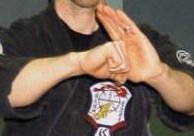Goldendragon7
Grandmaster
Probably the most important part of Kenpo (or any martial art for that matter) is the basics and their development. After all, those of us with strong American Kenpo backgrounds that were close to Ed Parker (not just attended seminars occasionally) or that have trained with his top students, know that this is paramount.
The Kenpo system that Ed Parker left us with is unparalleled if one really knows the in's and out's of it. There is rime and reason to everything. His life's work is outlined in his Infinite Insights series. Although not all is clear, hints are there if one knows how and where to look.
Although there are 3 divisions or our Art, Basics are prevalent in all the areas. The better acquainted you get with these basics the greater your skill will be as you progress. Many of the problems or issues that arise in training usually are traced back to either non existent or inadequate basics development. Proper understanding and delivery of torque (rotation) of the arms and body is a huge factor, stabilization of base, timing of the various parts of the body to achieve unified body harmony etc.
Many do not realize that the forms, sets and self defense techniques are just drills designed to develop these areas to their max. Sure there are many other factors that we learn from these tools as well, such as coordination (which incidentally is one of the most basic and fundamental necessities in the early stages of training), physical exercise, awareness, speed, multi striking, cross & same-side limb coordination, and much much more. However, without the emphasis on the basic development of body mechanics, you will never achieve your maximum potential. How can you deliver a strong punch or kick if you are off balance or your body is not coordinated to execute the physical actions needed? To block a punch, kick or any type of attack (I am not even talking about the ability to intercept or react to an attack stimulus, which is an area entirely unto itself) takes much practice on many factors and conditioning (mental as well as physical) to become skilled.
The different areas of our system were developed and organized to achieve just the results many of us desire. Yet, I see so often many getting into a specified area of a training drill (such as: is it supposed to be a backfist or a sword hand strike here) in which the realistic answer could be either.
Don't Major in Minor things. Look to what is really necessary to be a great martial artist. That answer is BASICS.
If I gather 25 different Kenpo Instructors together, and we watch 3 students doing a variety of different Kenpo movements, I can guarantee that no matter what specific technique or variation of the same is executed, no matter what "version" of that form or set is, we all will agree on the execution of great basics.
Body rotation
Balance
Foot and hand formations
Realm of actions (outer rim)
Coordination
Awareness (eye contact and positions)
Foundation development
Summation of force
Directional Harmony
others...
your thoughts...........
:asian:
The Kenpo system that Ed Parker left us with is unparalleled if one really knows the in's and out's of it. There is rime and reason to everything. His life's work is outlined in his Infinite Insights series. Although not all is clear, hints are there if one knows how and where to look.
Although there are 3 divisions or our Art, Basics are prevalent in all the areas. The better acquainted you get with these basics the greater your skill will be as you progress. Many of the problems or issues that arise in training usually are traced back to either non existent or inadequate basics development. Proper understanding and delivery of torque (rotation) of the arms and body is a huge factor, stabilization of base, timing of the various parts of the body to achieve unified body harmony etc.
Many do not realize that the forms, sets and self defense techniques are just drills designed to develop these areas to their max. Sure there are many other factors that we learn from these tools as well, such as coordination (which incidentally is one of the most basic and fundamental necessities in the early stages of training), physical exercise, awareness, speed, multi striking, cross & same-side limb coordination, and much much more. However, without the emphasis on the basic development of body mechanics, you will never achieve your maximum potential. How can you deliver a strong punch or kick if you are off balance or your body is not coordinated to execute the physical actions needed? To block a punch, kick or any type of attack (I am not even talking about the ability to intercept or react to an attack stimulus, which is an area entirely unto itself) takes much practice on many factors and conditioning (mental as well as physical) to become skilled.
The different areas of our system were developed and organized to achieve just the results many of us desire. Yet, I see so often many getting into a specified area of a training drill (such as: is it supposed to be a backfist or a sword hand strike here) in which the realistic answer could be either.
Don't Major in Minor things. Look to what is really necessary to be a great martial artist. That answer is BASICS.
If I gather 25 different Kenpo Instructors together, and we watch 3 students doing a variety of different Kenpo movements, I can guarantee that no matter what specific technique or variation of the same is executed, no matter what "version" of that form or set is, we all will agree on the execution of great basics.
Body rotation
Balance
Foot and hand formations
Realm of actions (outer rim)
Coordination
Awareness (eye contact and positions)
Foundation development
Summation of force
Directional Harmony
others...
your thoughts...........
:asian:

